Traditional weddings in Rajasthan feature extravagant décor, vibrant colors, traditional and folk-dance forms, wonderful food, rituals and music.
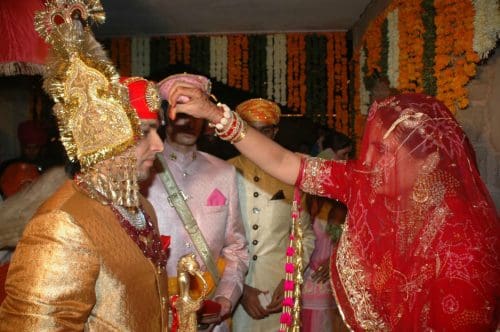
Rajasthan is known for its royalties, rich cultural past, and exquisite lifestyle, and its wedding traditions are famous. It is no wonder that weddings in the desert state are unique.
Celebrating a wedding in India’s Rajasthan state is like no other. Bursting with vibrant colors, mouth-watering feasts, and unique ceremonies, these traditional weddings are an unforgettable experience that will be etched into your memory forever.
Whether you’re the guest of honor or just along for the ride, there’s always something special happening at every turn that makes any Rajasthani celebration, unlike anything you’ve ever seen before.
Let us take a closer look at how tradition plays such an integral role in these nuptials.
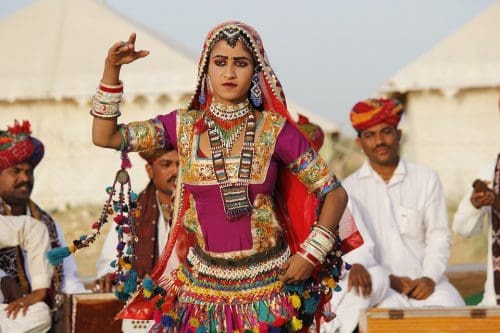
Furthermore, we’ll discuss what meals make up these extraordinary feast days so that next time you have to attend one of these special events (or even plan one) you’re truly prepared for this once-in-a-lifetime journey!
Pre-Wedding Rituals
We take a journey through some of the fascinating pre-wedding customs and ceremonies that would be perfect for lovers of culture looking to learn more about a wedding in this royal state which is guaranteed to be extraordinary or add interesting flavours to their own big day.
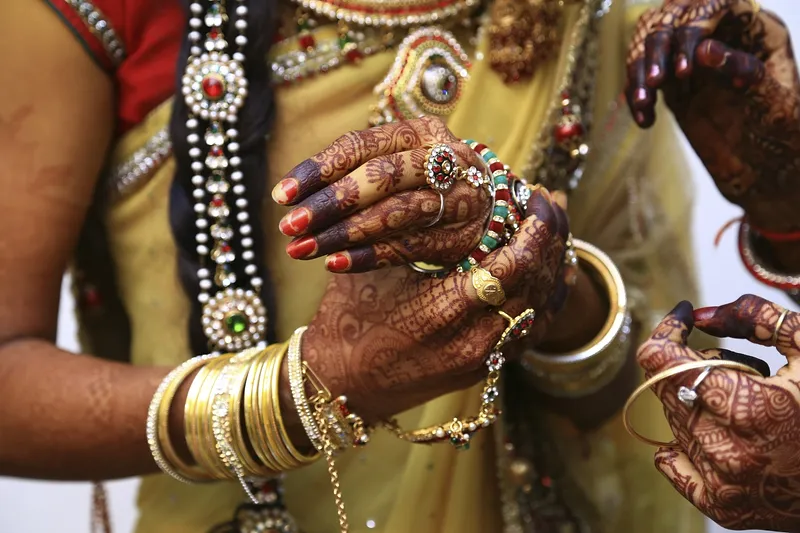
- Sagai – In Marwari culture, sagai pertains to the engagement ceremony. Mudha-Tikka is another name for this function. The wedding is held in the groom’s home. Male members of the bride’s family pay a visit to the groom’s family, and the bride’s brother places a kumkum and rice tika on the groom’s forehead to signify the match’s welcome. In general, women do not participate in the Sagai ritual.
- Ganapati Sthapana – Both of the bride and groom’s families celebrate this tradition a few days before the wedding, in which they begin the wedding ceremonies by placing Lord Ganesh’s idol on a sacred platform in a procedure termed Ganapati Sthapana.
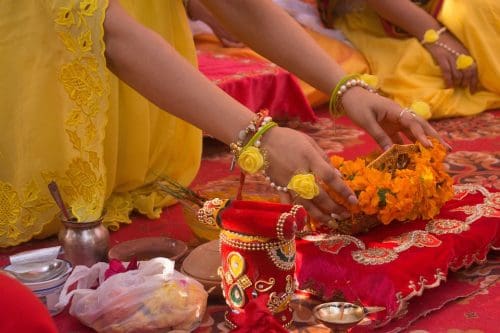
- Pithi Dastoor – In various cultures, Pithi Dastoor pertains to a ceremony similar to Haldi. Pithi is a turmeric, sandalwood, and sometimes besan paste that is administered to both the bride and groom. The bride dresses in a traditional yellow or orange gown and sits beneath a colourful shade, wherein her mother and other family members apply the paste to her hands, feet, and face. She is then showered in water that the women had collected from a local body of water. Women sing traditional wedding melodies while the dhol is being beaten. The vibe is jovial and cheerful throughout. At the groom’s home, the same customs are observed. The bride and groom are not allowed to leave the house after the Pithi Dastoor till the wedding day.
- Mahira Dastoor – Throughout this ritual, the bride or groom’s maternal uncle/mama pays a visit to their home and brings a variety of presents. The gifts contain bridal attire for the bride and husband, as well as jewellery, fruits, and sweets for the entire family. The bride’s or groom’s mother greets her brother and his family and feeds them home-cooked meals. It traditionally implies that he is also contributing to the wedding costs.
- Janeu – After performing puja and havan on the occasion of the wedding, the priest presents a sacred thread to the groom. During this event, the groom wears a saffron gown. He acknowledges the duties of married life by doing this ceremony, and he is moved from the Brahmacharya Ashram to the Garhasthya Ashram.
- Palla Dastoor – The bride is showered with clothing, jewellery, cosmetics, and accessories from the groom’s relatives. Her bridal jewellery and attire are among them. These items are on showcase in a public area of the house for all of the family’s relatives and friends to see.
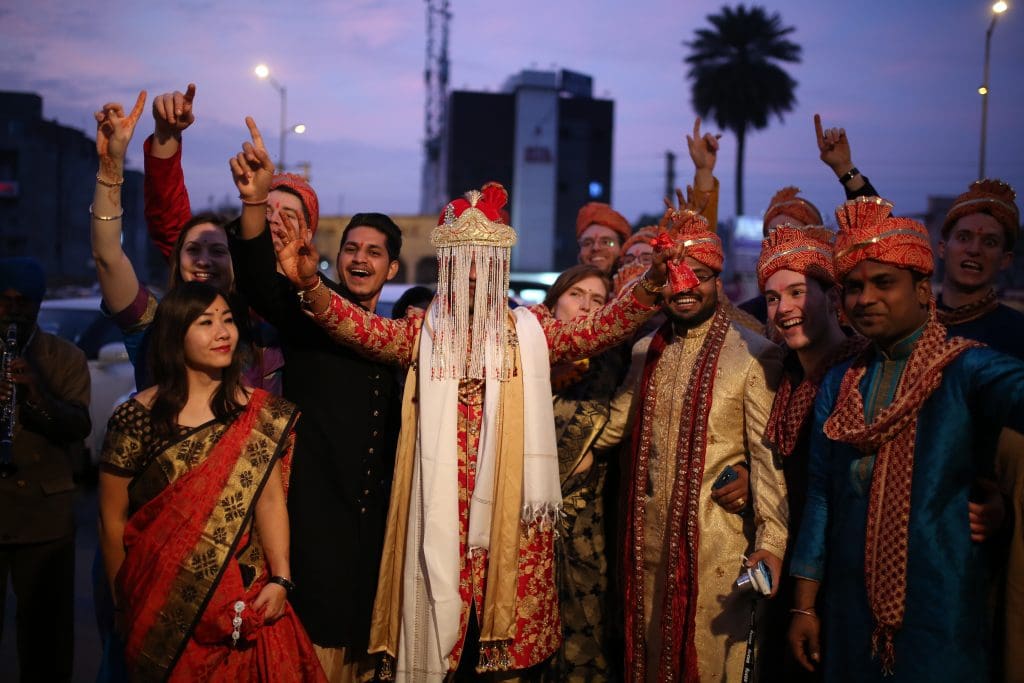
- Baraat – The wedding procession that follows the groom as he departs for the wedding destination is known as the baraat. He must ride a mare and wield a sword, a customary reminder of the region’s royal and military background.
- Aarti – At the entrance, the groom is greeted by a welcoming party. The bride’s mother does an elaborate Aarti for him and feeds him sweets and water. The groom is then greeted as he enters the venue.
- Jaimala – The husband is then led to the bride, who is wearing a veil over her face. She places seven suhalis on the groom’s head. Suhali refers to some sort of snack. The bride and groom exchange garlands after that.
- Granthi Bandhan – A knot is tied by the groom’s sister or the priest between the groom’s odhni and the bride’s odhni. This represents the coming together of two souls.
- Panigrahan – After the promises are made, the groom’s father places the bride’s hand on top of the groom’s. The Paanigrahan ceremony is finished when the groom accepts the bride’s hands from her father and ties a sacred thread across the unified hands.
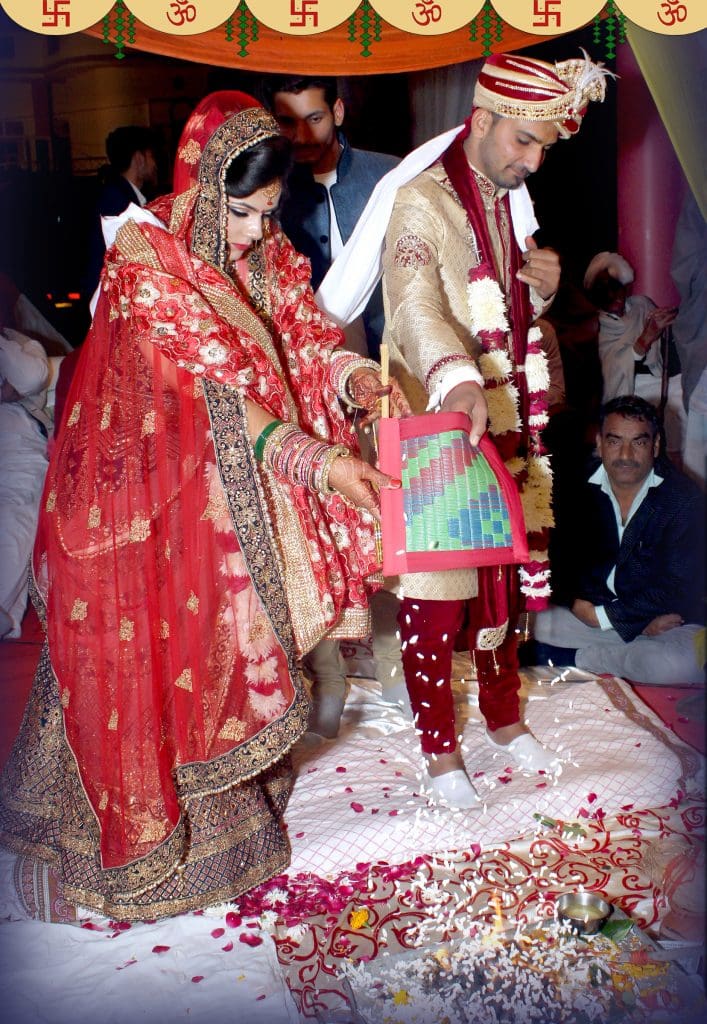
- Phera – While the priest repeats Vedic mantras, the bride and groom take rounds around the holy fire. Four pheras are taken in the mandap during Marwari wedding traditions. For the first two pheras the bride precedes the groom and then later two pheras are taken by the groom. Three more pheras are taken at the entry afterward.
- Ashwarohan – The bride’s foot is placed on a grinding stone. She must push the stone forward seven times with her feet. This ceremony symbolises the obstacles that the bride would experience during her married life and indicates that she will tackle them with conviction and resolve.
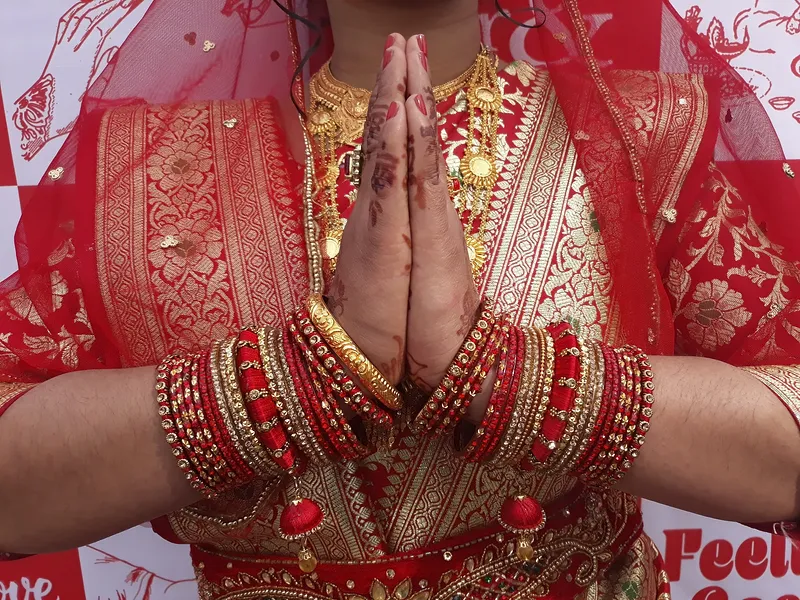
Post-wedding Rituals
- Bidai – After leaving the bride’s parental home, the newlyweds proceed to the groom’s home. The bride’s family bids her farewell with tears in their eyes. When the car starts, a coconut is placed under the wheel, which is meant to be crushed, giving good luck for the journey. In front of her husband, the bride lifts her veil for the first time, and he presents her with a piece of jewellery.
- Griha Pravesh — The bride is greeted with an elaborate and warm welcome by her mother-in-law, who performs an Arti before bringing her into her husband’s home. The bride is instructed to step over the threshold with her right foot into a dish containing milk and crimson solution. She kicks over a pot loaded with rice and a coin signifying the bringer of fertility and wealth to her husband’s home in five steps with her coloured feet.
- Pagelagni – The bride is introduced to her family and extended family during this ritual. The bride is blessed by the elders, and a puja is held in her honour.
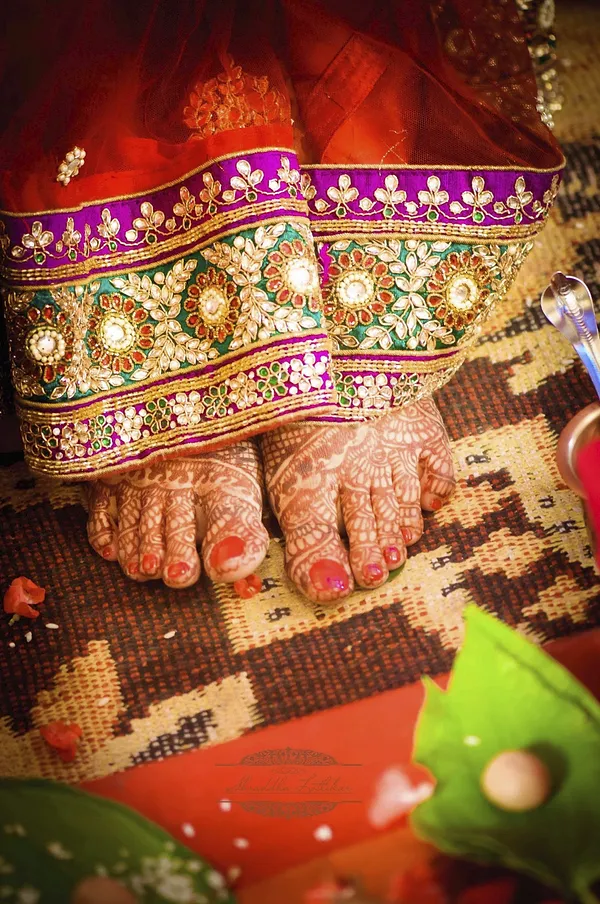
Wedding Attires
Are you looking for a peek into the fascinating past of Rajasthani culture? No visit to India is complete without delving deep into its rich traditions, especially when it comes to wedding attire! If you’re wondering what traditional Rajasthani wedding attire looks like and all the fabulous customs that go along with it, you’ve come to the right place. We’ll explore everything from sartorial choices to matchmaking rituals – get ready for an insight into cultural flamboyance at its best!
- Ghagra and a Choli – sometimes known as Kanchli, which is also the name of the Rajasthani clothing Choli or blouse – are the most common outfits worn by Rajasthani women. Ghagra is the name given to a form of long skirt worn by women in Rajasthan. A Choli or a long or short blouse is generally paired with the Ghagra. The bride’s entire face is covered throughout the wedding rites with a colourful Odhni or Dupatta, which completes the look. Rajasthani wedding ghagras come in a variety of brilliant colours and designs, such as Leheriya and Mothra. Cotton is commonly used for these.
- Rajasthani men are not far behind women when it comes to dressing up. They have the same vibrant and attractive appearance as women. A Pagri (turban), Dhoti or Pyjama, Angarkha, Patka (waistband), and Kamarbandh are among their clothes.
Great Cuisine
Rajasthan is a tapestry of mouth-watering cuisine, with a broad variety of delectable dishes that can make the wedding the finest it can be in terms of flavour. Rajasthani royal wedding meal is traditionally hot and spicy, cooked in pure ghee.
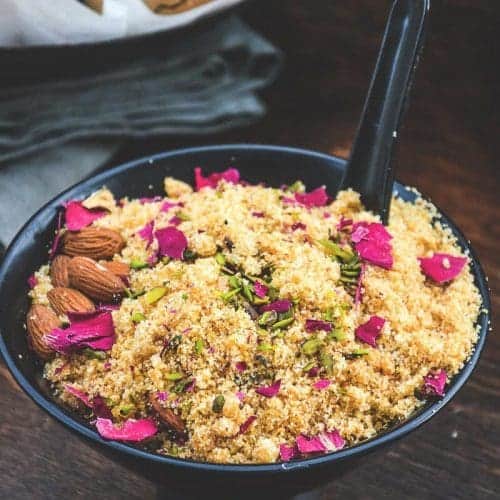
- Dal Baati Churma – This is the most well-known Rajasthani/Marwari dish that is vegetarian. The spicy dal and sweet churma provide a well-balanced dinner that goes well with baati.
- Rajasthani Kadhi – It’s a tasty vegetarian dish made with yogurt, gram flour, and seasonings.
- Gatte ka pulao – Another delectable Rajasthani or Marwari meal that is served as a main course. Gatte Ki Khichdi or Ram Pulao are other names for it. As previously stated, the gatta is formed from besan (gram/chickpea flour) and mixed with rice and seasonings.
- Mawa Kachori – This is a unique Rajasthani Marwari dessert. It’s a puffed pastry that’s deep-fried and stuffed with mawa and dry fruits before being dipped in sugar syrup.
- Ghevar – This is yet another traditional Marwari/Rajasthani celebratory dish. A sweet disc-shaped cake soaked in sugar syrup is served as a dessert.
- Balushahi – The design of this Rajasthani treat is similar to that of a doughnut, but the taste and texture are quite different. They’re made of maida flour and deep-fried, then dipped in sugar syrup and topped with a variety of toppings.
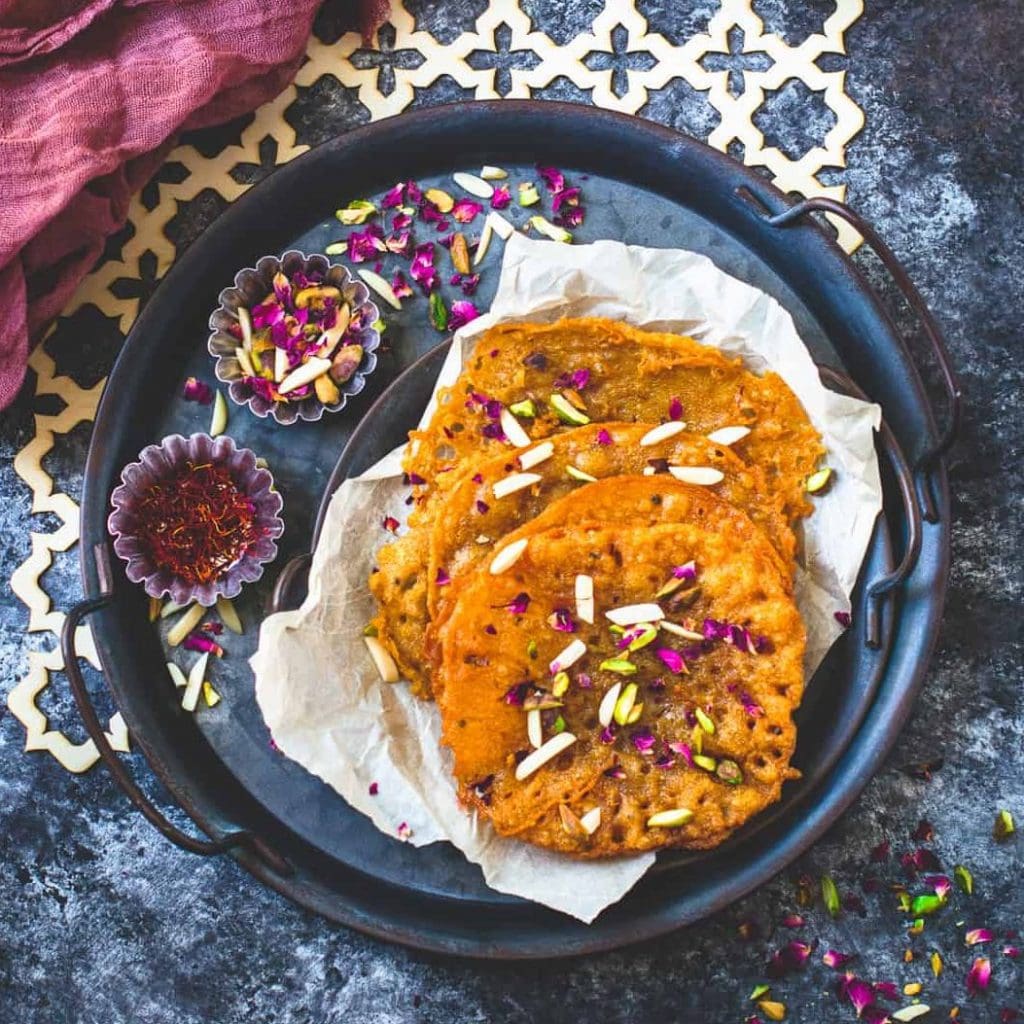
If you are ever invited to a traditional Rajasthani wedding, don’t hesitate to attend! It is an experience that you will remember for the rest of your life.
The weddings are full of glamour, color, and extravaganza, and it is fascinating to see how different they are from Western weddings. Make sure to wear something comfortable though, as you will be doing a lot of sitting on the ground!
Read More: Latest



